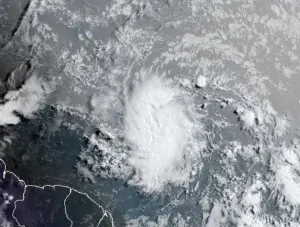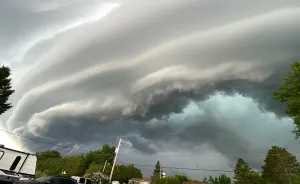
Strange lights spotted in sky above Morocco ahead of deadly earthquake
If a link between the lights and earthquakes is established, it could go a long way towards developing better early detection devices for seismic activity.
Reports of strange lights in the sky above Morocco ahead of a deadly magnitude 6.8 earthquake remain unexplained by scientists. However, some suggest they may be "earthquake lights" — a peculiar phenomenon that was described as far back as ancient Greece.
While video footage of the lights remains unverified, it isn't the first time they have been seen in recent history, and reports may become more common thanks to social media and smartphones.
NOVA PBS says similar lights popped up in 2021 ahead of an earthquake in Mexico City and again over parts of Japan in 2022 before a seismic event.
In the video above, the lights look like lightning. But according to The New York Times, earthquake lights can sometimes be different colours, look like fireballs, or be split-second flashes, depending on where they are in the sky.
Scientists can't confirm or deny the existence of earthquake lights, nor do they know what causes them. But if a link between the lights and earthquakes is established, it could go a long way towards developing better early detection devices for seismic activity.
What are some theories surrounding earthquake lights?
Stories of earthquake lights are sometimes dismissed as folktales, but they're compelling enough to receive at least a small definition on the US Geological Survey (USGS) website. The USGS is inconclusive about their existence, saying, "geophysicists differ on the extent to which they think that individual reports of unusual lighting near the time and epicenter of an earthquake represent" earthquake lights.
"Some doubt that any of the reports constitute solid evidence ... whereas others think that at least some reports plausibly correspond to [earthquake lights]," the USGS writes, noting that some reports of the phenomenon turned out to be electricity arcing from shaking power lines.
"People have wondered about them forever," Karen Daniels, a physicist at North Carolina State University, told The New York Times.
"It's one of those persistent mysteries that hang around and never quite get nailed."
Analysis of 65 reports of potential "earthquake lights" suggests the lights could be a form of static electricity, according to Geophysicist Friedemann Freund, the geophysicist who worked on the analysis.
He told The Washington Post the friction of tectonic plates rubbing together could create a current able to produce an electric discharge, possibly creating a flash of light.
Other scientists, like the ones referenced by the USGS above, hesitate to agree.
One of the problems with studying earthquake lights is they are unpredictable and short-lived National Geographic reports.
"As long as conflicting scientific theories emerge, the debate over causes of earthquake lights stands to remain charged," the publication writes.
The magnitude 6.8 earthquake hit Morocco's High Atlas Mountains in Eastern Morocco on September 8, 2023. At least 2,900 people were killed and about 5,500 injured, Reuters reported Friday.
Header image: Footage of recent clean-up efforts in Morocco following the September 8 earthquake (Reuters).










